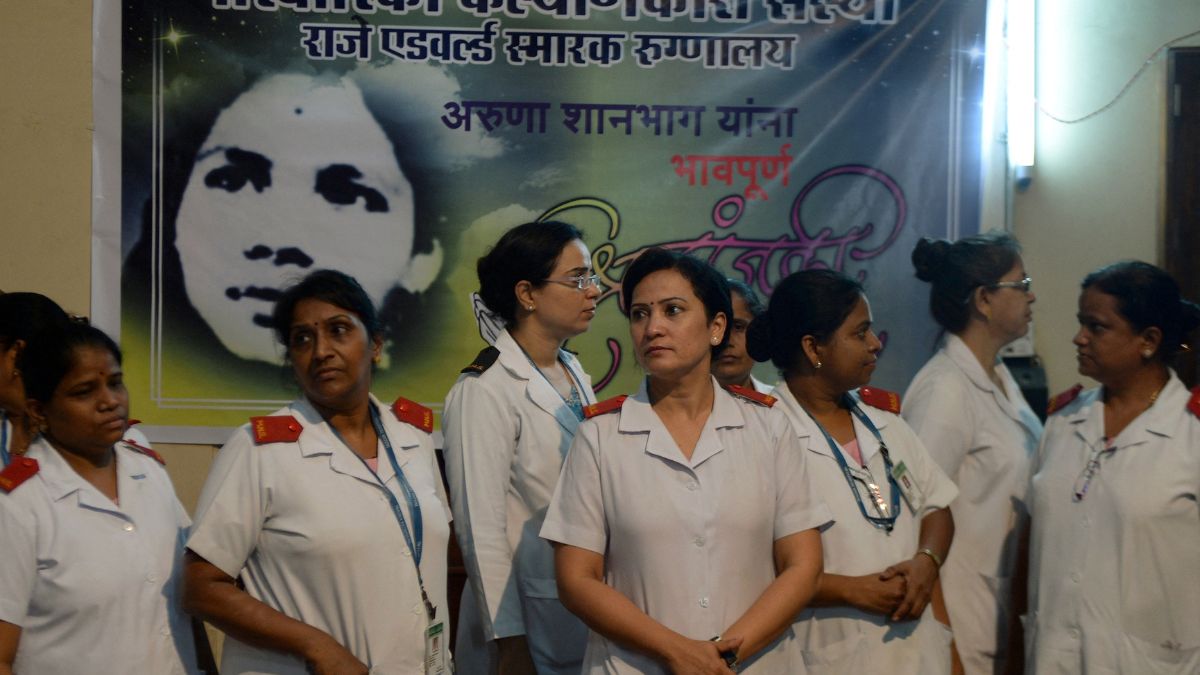Taking suo motu cognisance of the brutal rape and murder of a young trainee doctor at Kolkata’s RG Kar Medical College and Hospital, the Supreme Court drew attention to the violence faced by healthcare professionals in the workplace. Calling the lack of safe working conditions for doctors “deeply” concerning, Chief Justice of India (CJI) DY Chandrachud highlighted instances of violence against healthcare workers in West Bengal, Bihar and Hyderabad.
He also mentioned the horrific rape of Aruna Shanbaug in 1973. The sexual assault on her is one of the most gruesome cases of violence against medical professionals in the workplace.
“Due to ingrained patriarchal biases, the relatives of patients are more likely to attack the women doctors and they are more susceptible to sexual violence too and Aruna Shanbaug case is a case in point. Gender violence shows (a) lack of safety for women in the system,” the CJI observed on Tuesday (August 20), as per Bar and Bench.
What is this case referred to by the Supreme Court? We explain.
The assault on Aruna Shanbaug
Aruna Shanbaug, a nurse at Mumbai’s King Edward Memorial (KEM) Hospital, was brutally sexually assaulted by the ward boy Sohanlal Bhartha Walmiki in November 1973.
The 25-year-old nurse was changing her uniform to meet her doctor fiance when she was sodomised by Sohanlal. He then strangled her with a dog chain before walking away.
She was discovered 11 hours later, seemingly lifeless and drenched in blood.
The brutal attack had cut off the oxygen supply to her brain, leaving her deaf, blind and paralysed.
Impact Shorts
More ShortsAruna had earlier publicly accused him of stealing food meant for dogs at the hospital, reported BBC. She had also threatened to report him to the hospital authorities.
After remaining in a persistent vegetative state (PVS) for 42 years, Aruna passed away in 2015 from severe pneumonia.
Sohanlal was caught and convicted but it was a mockery of justice. He got a total of 14 years in jail for assault and robbery but was not charged with rape or sexual molestation as “sodomy” was not classified as rape under Indian law at the time.
However, the perpetrator served just seven years behind bars and walked free.
The face of India’s euthanasia debate
Aruna’s grim story sparked a change in India’s euthanasia laws.
She became an occupant of a room attached to ward No. 4 on the ground floor of KEM Hospital after the assault. A team of about a dozen nurses, doctors and hospital staff took care of Aruna’s food and other necessities.
According to an Outlook magazine report, the nurses bathed, fed and tended to her, ensuring to regularly turn her so she had no bedsores.
The nurses and the ancillary staff working the ward had become her family after she was abandoned by her own. Her doctor fiance had also moved on with his life and got married.
The magazine’s report mentioned nurses played music throughout the day in Aruna’s room and read books. They also bought her cotton gowns, bedsheets and other items used by a woman.
Anjali Parade, former sister in-charge of ward number 4, told Outlook last year, “We knew that she would never recover. The attack was so brutal that we would get goosebumps whenever we looked at her lying on that bed getting frail each day. Yes, there were hospital gowns and bedsheets, but each of us wanted her to experience the comfort she may have got if she was normal. None of us had a lot of money then, but the doctors helped too.”
Aruna’s case led to the first euthanasia plea in the Supreme Court. Journalist Pinki Virani filed a petition in the apex court in January 2011, seeking a legal end to the nurse being forcefully fed. She had argued that Aruna is not capable of experiencing life in any meaningful way, and should be allowed to die with dignity, as per NDTV.
The case stirred a national debate on the right to life, bringing Aruna to the centre stage. The mercy killing petition was vehemently opposed by the nurses who tended to Aruna over the years.
The top court rejected the euthanasia plea for Aruna in March 2011. However, the judgement allowed for “ passive euthanasia ” in rare cases by withdrawing life support to patients in a persistent vegetative state.
Aruna’s demise in 2015 finally ended her 42 years of agony. Her picture is mounted on a wall in KEM Hospital. “The photograph is a reminder that women need safer workspaces. It is also a reminder that the most brutal attack took place here, which was her workplace,” a nurse told Outlook.
Reacting to her death at the age of 66, Virani reportedly said in 2015, “Aruna got justice after all these painful years. She has found release and peace.”
With inputs from agencies


)

)
)
)
)
)
)
)
)



